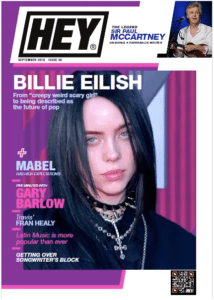

2018 witnessed the 70th anniversary of the LP, the ‘long player’, also known as the album. For people of a certain age and for vinyl junkies, the album is everything. Hey Mag takes a look at the music format that is making a comeback. Words_Darren Haynes [First published in Hey Mag, September 2019]
Long before the days of streaming, people of a certain age (me included) would buy an album and listen to it, in its entirety, only pausing to flip the black vinyl and drop the stylus on to the second side. The introduction of tape cassettes and CDs meant that we didn’t even need to do that. Play, listen and connect to the artist through their music. No cherry picking favourite tracks or skipping the filler songs: simple, passive aural pleasure.
But when is an album considered an album? In the pre-digital era, an album was classified as such by its physical limitations. Vinyl LPs (long players) became popular in the 1950s. Before this, 10” singles on shellac or 7” singles on vinyl, with one song on each side were the norm. The standard album length was around 30–45 minutes, simply because that’s how much music could be etched into the grooves on the vinyl.
Cassette tapes allowed more time for music (up to 45 minutes on each side) but cassettes were only an alternative format to their vinyl counterpart. It wasn’t until the introduction of the compact disc in the 1980s that the game changed. The CD allowed 74+ minutes of recorded audio.
The advent of CD technology also allowed for album tracks to be selected out of sequence … or even skipped altogether.
Technology changed the ingrained music culture of listening to an album in its entirety and our attention spans got shorter.
According to Apple Music, the criteria for the body of work to be considered an album, is seven or more tracks OR one to six tracks with a running time in excess of 30 minutes. Compare Kanye West’s Ye album with seven tracks, 23m 41s in length versus Drake’s lengthy 89m 73s double album, Scorpion, with 25 tracks. Both albums sold well on both sides of the Atlantic.
There could be a case for saying that less is more. The Guinness World Records website reports that the digital album with the most songs is a bloated 298 tracks, and was achieved by The Pocket Gods with their UK album 300X30: My Life As A Playlist, released on 22 March 2019.
Albums remain popular in the UK. In 2018, 143m albums were either streamed, purchased or downloaded, representing a 6 percent rise on the year before.
To prove the point, the UK’s second National Album Day will be honoured with events and activities on Saturday 12 October 2019 to “celebrate the UK’s love for the album and the craft that goes into making this culturally significant body of work”.
The theme, Don’t Skip, follows the notion that to truly discover the joy of an album — both new and classic — you need to listen to an album, as a complete body of work. In the old days of album creation, track sequencing was a serious matter, taking the listener on an aural ‘journey’. If it wasn’t the artist as part of their own artistic storytelling (or contract), it would be the record exec who would decide the order of the songs.
Whether you’re a cherry-picker or a full length long-player listener, one element holds true. Each track has involved, creativity, skill, technique and a thought process; it deserves the chance to be heard, again and again. Don’t skip it.
